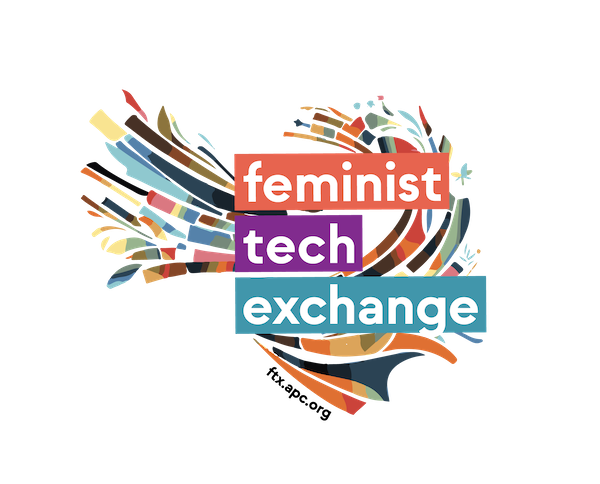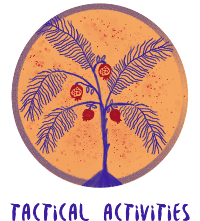Planning Response to Online GBV [Tactical Activity]
This activity is designed to unpack individual, community and movement response to incidents of online violence. For this activity to work, an example of a specific incident of online GBV is required.
Learning objectives this activity responds to
- An understanding of the forms of online online GBV and its impacts on the survivors and their communities.
- An understanding of the continuum of violence between the offline and the online spheres, and the power structures that allow it.
- Ideas, strategies and actions about the ways in which online GBV, especially in their participants´ contexts, can be addressed.
Who is this activity for?
While is activity is can be used for participants who have basic understanding of online GBV, it is more useful for folks that play a role in responding to, or organising such responses, to incidents of online GBV.
Time required
This will require at least 4 hours.
Resources needed for this activity
- Flip chart paper that explains the Mapping responses to online GBV table (see below)
- Written down online GBV examples for each group to refer to
Mechanics
It would be important to have unpacked a specific online GBV scenario with the participants before doing this activity. It is recommended that you do this Tactical Activity after you have done the Deepening Activity: Deconstructing Online GBV. Depending on the size of the group, break them down into smaller groups to plan how to respond to an incident of online GBV.
Present the table to map the response to online GBV incidents. This is a way to prioritise and timeline a variety of responses to online GBV and to have a collective approach to it.
The map has the following elements:
From Time of Incident
In the template, this is broken down into responses in the first week, within the first month, and in 6 months. Depending on the severity and escalation of the incident, this can change with the exception of the responses within the first week since the time of the incident. Some responses go beyond 6 months, especially those where the survivor takes legal and / or advocacy actions. Some kinds of online GBV are resolved quicker than other, so tables for that would not take up to 6 months. The goal here is to timeline actions according to immediate, short-term and medium term.
Individual response
This has to do with the what actions the person experiencing online GBV should take.
Community response
This means the actions that the individual´s friends, organisations, networks and communities will take to help address the online GBV or provide support to the survivor. Some guide questions for this:
- Who is the community around the individual?
- Does the individual have close friends / family they can rely on for support as they deal and recover from the incident?
Movement response
This are the actions that the larger women´s rights and feminist movements can take in response to specific online GBV cases.
Digital security response
These are the actions that the individual and their community will take to safe-guard their online communications, and prevent any more breaches of privacy or escalate the harassment. This could include: securing online spaces and / or devices, reporting incidents to platforms, self-doxxing to know what information is available online about the survivor.
Physical security response
These are the actions that the individual and their community will take in order to safe-guard the individual´s security outside of the internet. This could be preventative tactics and strategies against escalation of online GBV incidents. Or, it cases where the offline GBV already has physical security impacts, this might be corrective tactics.
Well-being response
These are actions that can be taken to ensure that the individual is able to take care of themselves. These are also actions that the community and the movement can take to make sure that the individual under threat is supported.
Advocacy actions
These are actions that can be taken in order to seek redress about the incident beyond just stopping the online GBV. These could include legal actions against perpetrators and / or platforms, or campaigns against online GBV. At the very least, Advocacy Actions documents incidents so that others may learn from it.
Mapping responses to online GBV incidents (with guide questions)
| From Time of Incident | Individual response | Community response | Movement response |
| 1st week | Digital security response | ||
| What does the survivor need to be doing to secure their online communications in the 1st week since the time of the incident? Where did the online GBV happen? What do the platforms allow its users to do to safe-guard their accounts? What information about the individual is available on the internet, and what can they do to take that content down? |
Who can support the individual if they need technical assistance to carry out actions to protect their accounts and communications? Who can support the individual in reporting the incident to the platform? |
Will there be a need for the larger movement to support the individual and their community to report the incident? | |
| Physical security response | |||
| Is information about the individual available online? What can the individual do in order to protect themselves? | What available safe spaces can the community offer? | ||
| Well-being response | |||
| Does the individual need to be offline? Does this individual need a person(s) to support them in monitoring certain platforms? Who provides support and safety for the individual? How will they stay connected to their support resources? What are the ways in which the survivor finds comfort and solace? |
Who in the community will be the support person(s)? | Does the person want others in the movement to know about the incident? | |
| Advocacy actions | |||
| What actions does the individual want to take in order to address the incident? Note: If the individual decides to go the legal route, there needs to be understanding of the national laws / policies within the group, but also the advocacy actions will be far more complicated. |
Who can support the individual in documenting the incident? | Will there be a call for the movement to respond to the incident as it happens? | |
| Within 1 month | Digital security response | ||
| What follow-up digital security tactics and action will the individual take? What changes in practice does the individual need to do in order to further safe-guard themselves? |
What changes within the community´s communication practices need to change in order to protect themselves from further incidents? Are skills and knowledge available within the community in order to implement such changes? If not, who can the community reach out to? |
||
| Physical security response | |||
| What does the individual need in order to have safer living and working conditions? | What changes within the community´s practices need to change in order to protect themselves from further incidents? Are skills and knowledge available within the community in order to implement such changes? If not, who can the community reach out to? |
||
| Well-being response | |||
| Does the individual need professional help in order to deal with the incident? | Do the individual´s main supporters need professional help in order to under deal second-hand trauma? | ||
| Advocacy actions | |||
| For legal response: Has the the incident been reported to the proper authorities? What kind of documentation is required? | What are the opportunities within the community to provide legal support for the individual? | ||
| 6 months | Digital security response | ||
| What needs constant monitoring in the individual´s online activities and communications? | |||
| Physical security response | |||
| Well-being response | |||
| Advocacy actions | |||
| Opportunities and spaces where the incident can be shared in order contribute to the larger documentation of online GBV? | |||
Filling in the table or discussing actions to take at different times at by different actors will be an opportunity to discuss and share strategies and tactics among and with the participants.
If there are multiple groups working on their tables, it is important for the trainer / facilitator to go around to see if there questions and information that needs sharing.
Facilitation Note: It doesn´t have to be a matrix. If you are not spreadsheet type of trainer / facilitator, use another way for the groups to work out actions and strategies to respond to online GBV incidents. If your participants are also not comfortable with tables, then encourage them to strategise using a different methodology. You can use sticky notes to list down the different responses and cluster them into the different types (Digital Security, Well-being, Physical security, Advocacy Actions). The purpose of this activity is to strategise responses and to make sure that the participants are thinking about online GBV response in a more integrated way (rather than just focusing on the digital security actions) and in from a collective perspective (rather than putting all the onus of the response on the individual experiencing online GBV).
To synthesise the activity, focus on the following:
- Learnings about how platforms respond to cases, and what kind of advocacy we need to do in order to make them more responsive to online GBV
- Resources available for activists that groups have not thought of.
- The importance of approaching responding to online GBV from a collective perspective
Facilitator preparation notes
In this session, the facilitator / trainer will need to have more direct interventions about the following:
- basic digital security tactics, safeguarding accounts and devices
- strategies for physical security
- knowledge of the ways in which platforms respond to incidents
- knowledge of legal redress options in the participants´s countries
- knowledge of impact of online GBV on participants´ well being and some strategies to address re-traumatisation of participants
Useful Resource: Hey! Is Your Friend Being Attacked Online?


